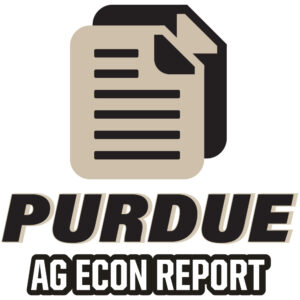Hog Profits Rock in ’14, Stay Strong in ’15
December 13, 2014
PAER-2014-16
Chris Hurt, Professor of Agricultural Economics
Hog producers had a record profit year in 2014. The PED virus contributed to smaller pork supplies, but the fear that pork supplies could be down much more led to extremely high hog prices from the late-winter of 2014 into the early fall. Hog prices averaged a record $76 per live hundredweight, and profits were estimated at $53 per head.
Pork expansion is already underway for 2015 and prices will be lower, but still profitable. Producers intend to far-row 4% more sows in the final quarter of 2014 and those pigs will reach market by the spring of 2015 with pork supplies moving up 3% in the spring and by up to 5% in the summer and fall. For all of 2015, pork supplies are expected to rise by about 4%.
PED will still have some impacts on baby pig death losses this winter, but are expected to be smaller than a year ago. Producers have better management protocols to handle PED herds and prevent the spread of the disease to other herds. Also there are currently at least two vac-cines that are approved and are partially effective against the disease and finally many more herds have been exposed to PED and therefore it is felt there is now better immunity built up against the disease.
Prices for live animals in 2015 are expected to drop to an average of around $62 from the record of $76 in 2014. Prices are expected to average in the low-$60s in the first quarter, then in the mid-$60s in the second and third quarters before falling to the mid-$50s by the final quar-ter.
While hog prices are much lower in 2015, costs of pro-duction will drop by about $4 per hundredweight due to the lowest feed prices in five years. Costs for the year are expected to be in the low-$50s.
Profits are expected to average about $31 for the first three quarters of 2015, but fade sharply in the final quarter as hog supplies build and hog prices fall. Still, for the entire year, profits are expected to average about $25 per head with the strongest of the profits in the January through September period. Even more expansion can be anticipated throughout 2015 with even higher pork sup-plies in 2016 and narrow margins.
